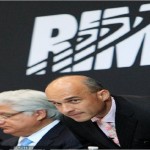Use Role Plays as Tryouts in Employee Selection

When I was the owner and human resources manager for 808image Web Design, an web design company, I have been faced with a barrage of resumes that came to my office in response to employment ads. With the unemployment rate in Hawaii being higher than the U.S. mainland, the competition for a position in my company have been intense. I had applicants that not only send me resumes, but also supporting documents such as papers written for school, documentation of projects completed at former employers, anything that will give them an edge in having me select them to my organization. My role as both the Owner and HR Manager was to evaluate their qualifications to determine a fit with my organization. I help them plan and implement decisions that will differentiate them from their competition for their future success. My areas of expertise in recruitment and selection and training and development have led me to develop a role playing exercise that can be used in the interviewing process.
As the owner of a web design company in Hawaii, my approach to recruitment and selection of candidates came from my experience as a football player, both when I was playing in college and when I played very briefly in the Arena Football League with the LA Avengers. The way football players are selected to be on the team peaked my interest about using that concept in my company. When football players are interested in playing for a team, they usually attend an open tryout called a combine. At this combine, all hopefuls as they are called go through a battery of tests to evaluate their skills and whether they should be invited to a second tryout. The series of tests that these hopefuls went through were the four corner agility, t-shuttle run, vertical jump, 40 yard dash, and one-on-one drills grouped by position. After all candidates go through these tests, the coaches sit down and evaluate who should come back for a second tryout. This experience has led me to use this concept in my organization in selecting candidates.
With competition in the job market being intense and interpersonal skills being a must in any organization, I have developed a behavioral interviewing system that uses role-playing exercises which I used for selecting my sales representatives. Role playing is an excellent technique that is used in training programs to improve interpersonal skills and in sensitivity training. When conducted properly, role-playing can lead to a rich learning experience for both the interviewer and the applicant. By depicting actual job situations, the role-play can be a realistic job preview for the applicant. The applicant will get to see first hand what the he or she will likely face if hired.
It is important to note, that role-playing is a “tool” to be used in selection and should not be solely relied upon in the decision. The best hiring decision that I use is one that takes a holistic view of applicants; not relying on any one tool, just as if I were building a football team. I have all my applicants go through all of the selection techniques. The interviewer will get to see how well the applicant relates to other people, which is a key success factor of any position in any organization. By taking a holistic view, the hiring manager and I are able to see first hand the strengths and weaknesses of each candidate. For the candidates that we select, the weaknesses can then be used as developmental opportunities to make the new employees more valuable contributors to your organization.
The disadvantage to role-playing is the high labor cost involved in developing the role-playing exercises. It consists of using job analysis techniques, such as observations of job incumbents. However, these high costs can be offset by the improved performance, lower turnover, and improved teamwork. I expanded these exercises to selecting my HR interns to see the ability to work well with co-workers. The result was a cohesive, high-performing team.
Successful organizations are those that are creative and proactive in this regard. Your organization will clearly make a difference to society, thus creating favorable applicant reactions (i.e. positive word-of-mouth). These exercises should provide you with a rich learning making you feel and behave this way too, even outside the workplace.



